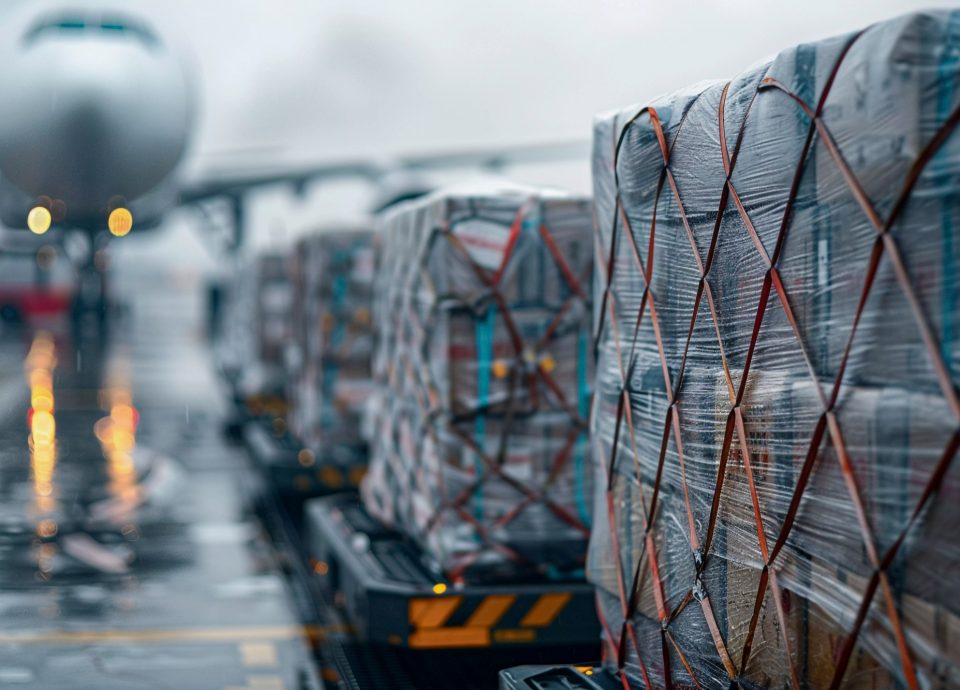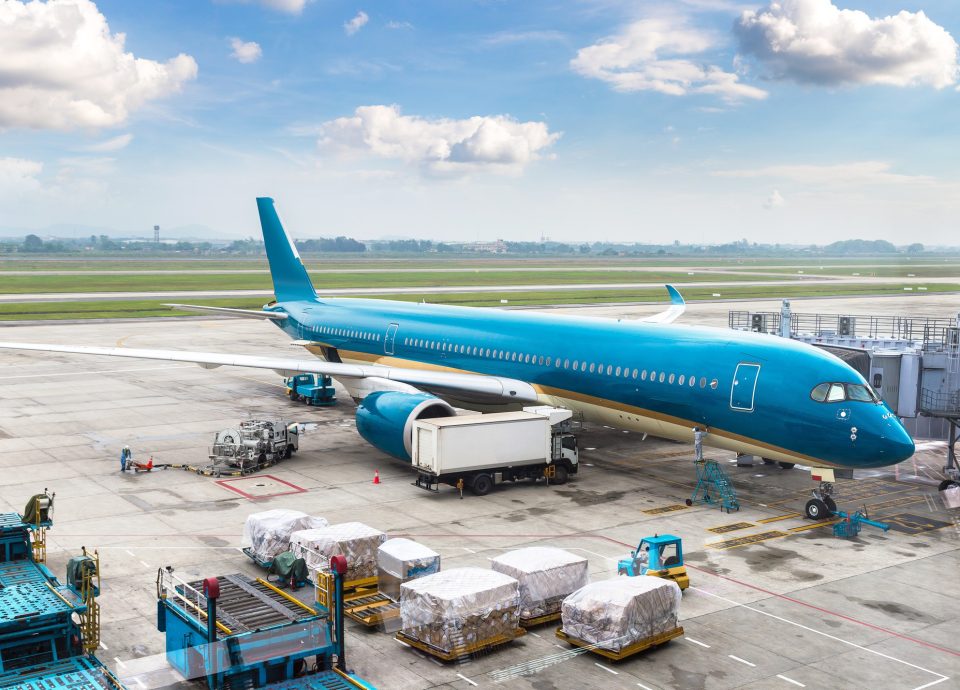Global commerce now moves at the speed of a tap. Product launches span continents, social media spikes can sell out entire categories overnight, and manufacturers operate with just-in-time inventories that leave no room for error. In this environment, urgent air delivery isn’t a nice-to-have—it’s a practical way to defend revenue, protect brand promises, and keep production lines humming.
Sprinter Emergency Transport Inc. was built for these moments. We design, execute, and recover time-definite moves where deadlines are hard, cargo is sensitive, and visibility is non-negotiable. This comprehensive guide explains what makes urgent air delivery uniquely powerful, how the workflow really operates, and when to choose it over slower modes to minimize business risk and maximize ROI.
What Urgent Air Delivery Actually Means
Urgent air delivery is the movement of commercial goods by aircraft—with priority capacity, time-definite service levels, and proactive recovery plans—synchronized across first mile, airport handling, export clearance, linehaul flight, import brokerage, recovery, and final mile. Compared with surface modes, it compresses transit time from weeks to hours or days and keeps freight inside secure, controlled environments with fewer handoffs.
Why speed alone isn’t the whole story
- Predictability: Multiple daily departures and protected routings reduce schedule variance.
- Security: Screened cargo, restricted-access areas, and fewer touches lower theft and damage risk.
- Global reach: Hub networks connect landlocked or disruption-prone regions with dependable ETAs.
Passenger belly vs. freighter options
- Passenger belly provides frequency for parcel-dense, smaller consignments.
- Freighters offer main-deck doors, outsized capacity, and room for active temperature-controlled containers—ideal when urgent air delivery must balance size with speed.
Why Urgent Air Delivery Is a Game-Changer for Global Trade
E-commerce, omnichannel retail, and lean manufacturing have rewritten the rules. “Fast enough” is often not fast at all.
Shorter cash-to-cash cycles
Inventory that arrives in days instead of weeks sells sooner, reduces warehousing, and frees working capital. Urgent air delivery accelerates revenue recognition and improves cash flow—especially on high-velocity SKUs.
Marketing calendars that actually stick
Launches, pop-ups, events, and shelf resets carry fixed dates. When promotions must synchronize across regions, urgent air delivery protects the window that expensive campaigns depend on.
Resilience when networks wobble
Port congestion, road closures, weather, and labor actions are now common. With alternates and reflight options, urgent air delivery provides a controlled lane when other networks stall.
A safer path for high-shrink goods
Electronics, luxury items, prototypes, and precision components fare better with fewer touchpoints. Secure nodes and quick routing make urgent air delivery a smarter choice for protecting margin.
The End-to-End Workflow: How a Time-Definite Air Move Works
Understanding the anatomy of the move helps your team budget accurately, set expectations with customers, and remove avoidable delays.
Step 1 — Planning and capacity booking
Your logistics partner confirms service level (express, next-flight-out, or charter), locks space, and prepares alternates. Proactive capacity is the foundation of reliable urgent air delivery.
Checklist to align early
- Dimensions and weight (to calculate chargeable weight)
- Temperature or dangerous goods requirements
- Required delivery window and acceptable alternates
- Incoterms and who pays duties/taxes
Step 2 — Packaging and screen-ready tender
Strong yet light materials, internal blocking/bracing, and clear handling icons minimize rework. Screen-ready shipments shorten dwell and keep urgent air delivery on pace.
Step 3 — Documentation and pre-clearance
Accurate commercial invoices, HS codes, and consignee data allow pre-filed entries. Clean paperwork prevents the most common bottlenecks in urgent air delivery.
Step 4 — Security screening and build-up
In Canada, air cargo must comply with Transport Canada’s Air Cargo Security Program. Piece-level screening and clean build-ups into ULDs protect timing and integrity.
Resource: Transport Canada – Air Cargo Security Program
Step 5 — Uplift, alternates, and in-flight visibility
Milestone scans—received, screened, built, departed—feed your TMS/ERP. If irregular operations arise, reflight or reroute plans fire immediately so urgent air delivery stays within the promised window.
Step 6 — Arrival, customs, and recovery
Pre-filed entries and accurate data speed clearance. Bonded cartage avoids warehouse queues and protects last-mile timing.
Resource: Canada Border Services Agency – Commercial Importing
Step 7 — Final mile and proof of delivery
Appointment control, white-glove options, and strong POD capture finish the move. Post-shipment analysis of any exceptions drives continuous improvement.
The Economics: Why Paying for Speed Often Saves Money
Comparing per-kilo rates alone undersells the value. Use a total-landed-cost lens that includes penalty avoidance, inventory carrying cost, shrink reduction, and earlier invoicing.
- Avoided penalties: Marketplace SLAs, retail chargebacks, and line-down costs quickly dwarf rate deltas.
- Higher margin protection: Less damage and theft preserves full-value saleability.
- Cash flow: Faster cycle time shortens the order-to-cash loop.
- Lower buffers: Reliable urgent air delivery reduces safety stock and storage spend.
When a missed delivery risks six figures, the premium is usually the cheapest part of the problem.
Mission-Critical Use Cases Where Urgent Air Delivery Excels
Healthcare and life sciences
Tight stability windows, cold-chain compliance, and chain-of-custody requirements demand speed and control. Urgent air delivery supports validated passive and active thermal solutions with data loggers for audit trails.
Manufacturing and MRO spares
A single missing component can halt production or keep an aircraft on ground. In these cases, urgent air delivery is the least expensive “expensive” option compared with downtime.
Retail launches and event-driven inventory
Ad campaigns, influencer drops, and store resets don’t move. Urgent air delivery preserves schedule integrity across countries.
High-value technology and luxury goods
With fewer touches and secure dwell, urgent air delivery limits shrink risk and protects brand reputation.
Packaging and Risk Control for Predictable Outcomes
Quality packaging converts unknowns into knowns.
Design for the real world
- Double-wall cartons or engineered crates to resist compression
- Internal bracing to prevent movement
- Edge/corner protection; shock/tilt indicators for accountability
- Desiccants and moisture barriers for humidity-sensitive items
Cold chain tips
- Pre-condition passive packouts and validate hold times
- Consider active containers with telemetry for longer routes
- Maintain temperature logs end-to-end to document compliance—especially when urgent air delivery underpins viability
Technology & Visibility: Turning Speed into Predictability
Fast is good. Predictably fast—and visible—is best.
What you should see (and automate against)
- Milestones from tender to POD: received, screened, built, departed, arrived, customs status, recovered, out for delivery
- Exception alerts for reflight events, weather holds, and customs reviews
- API/EDI feeds so operations and finance don’t chase updates
With better data, your team can re-prioritize orders, message customers proactively, and schedule docks with confidence—in short, make urgent air delivery work for the whole business.
12 Practical Ways to Accelerate Your Next Air Move
- Tender freight before noon to hit more same-day departures.
- Pre-file customs with complete invoices, HS codes, and consignee details.
- Standardize carton footprints to avoid volumetric surprises.
- Keep emergency AWB templates and contact matrices pre-approved.
- Split critical lots across consecutive flights to hedge disruption.
- Stage bonded cartage before wheels-down to cut warehouse dwell.
- Put SLAs on screening turn times at origin.
- Share ASNs so receivers staff docks and prep space.
- Validate thermal packouts in real route conditions.
- Photograph packouts and seal numbers for claims support.
- Map weather alternates by season for each hub.
- Confirm Incoterms and payer of charges in writing to prevent disputes.
Each habit trims minutes that add up to hours—protecting the promise of urgent air delivery.
Sustainability Without Losing Velocity
Aviation is energy-intensive, but design choices matter.
- Favor newer aircraft and routes with higher load factors.
- Participate in SAF (sustainable aviation fuel) programs where available.
- Right-size packaging to reduce dimensional weight.
- Consolidate compatible orders when timelines allow.
Thoughtful planning enables urgent air delivery to coexist with responsible environmental goals.
Building a Multimodal Strategy with Air in the Lead
You don’t need to move everything by air to reap the benefits. Blend modes to protect outcomes and costs.
- Use urgent air delivery for line-down components, launch-critical SKUs, and high-shrink corridors.
- Use standard air for routine replenishment where days matter, not hours.
- Use ocean or deferred ground for bulk inventory—then pivot to air strategically when variance threatens revenue.
Data-driven rebalancing each quarter keeps your network agile and cost-aware.
Why Choose Sprinter Emergency Transport Inc.
When it absolutely has to move, you need more than a booking—you need orchestration. Sprinter Emergency Transport Inc. exists for those moments when urgent air delivery must perform under pressure.
What we deliver, every time
- Capacity when it counts: Access to passenger belly networks, freighters, and charters so urgent air delivery lifts even in peak season.
- 24/7 command and recovery: Named operations contacts, proactive exception handling, and pre-built alternates.
- Compliance baked in: Lithium battery/DG fluency, validated cold chain, and audit-ready documentation aligned to airport workflows.
- Secure handling end-to-end: Screen-ready tender, tamper-evident seals, vault/escort options, and bonded cartage at destination.
- Real-time visibility: API/EDI feeds, live milestones, and temperature telemetry when required.
- Transparent pricing: Line-item quotes that match invoices—no surprises.
Our ethos is simple: treat your deadline like our own, and make urgent air delivery as reliable as it is fast.
A launch that couldn’t slip
A consumer-tech brand needed synchronized inventory in three countries for day-one sales. With pre-filed entries, split-lot uplifts, and staged bonded trucks, stores stocked on time and ads stayed profitable—an urgent air delivery plan converting risk into routine.
A plant saved from downtime
A Tier-1 supplier faced a looming line-down. We prioritized capacity, rerouted around weather, and bridged the final leg with bonded cartage. Production stayed online—a textbook urgent air delivery save.
Make Certainty Your Competitive Edge
Unpredictable transit erodes margins and customer trust. A disciplined program built on urgent air delivery restores control: capacity to lift, processes to pass security, data to see issues early, and recovery plans when variables change. That combination safeguards revenue, reputation, and the promises your brand makes every day.
Sprinter Emergency Transport Inc. is ready to translate your deadlines into dependable outcomes. Tell us your lanes, constraints, and timelines—we’ll architect an urgent air delivery plan that performs when it matters most.
Need help now? Contact Sprinter Emergency Transport Inc. for a rapid assessment and flight-ready options today.
Frequently Asked Questions
1) When should I choose urgent air delivery over other modes?
Select urgent air delivery when a day’s delay destroys value—line-down prevention, fixed launch dates, cold-chain integrity, or high-shrink lanes. If the cost of being late exceeds the air premium, the choice is clear.
2) How can I control costs while using urgent air delivery?
Right-size packaging to reduce dimensional weight, tender earlier to access more departures, split critical vs. non-critical quantities, and reserve urgent air delivery for the fraction of freight where speed changes the outcome.
3) What documents do I need to keep urgent air delivery on schedule?
At minimum: commercial invoice, packing list, and Air Waybill, plus any required certificates or permits. Clean HS codes, values, and consignee data enable pre-clearance and keep urgent air delivery moving.
4) Is cold chain feasible with urgent air delivery?
Yes. Validated passive packouts or active containers with telemetry, shorter ramp exposure, and milestone visibility make urgent air delivery the preferred option for pharmaceuticals and perishables.
5) Can lithium batteries and electronics move under urgent air delivery?
They can with strict adherence to IATA rules for classification, packaging, and labeling. A compliant workflow prevents security holds and preserves the timing of urgent air delivery.
6) What visibility should I expect during urgent air delivery?
Milestones from receipt to POD—screened, built, departed, arrived, customs status, recovered, out for delivery—plus exception alerts integrated into your systems. Visibility turns urgent air delivery from “fast” into “predictably fast.”
7) How fast can Sprinter Emergency Transport Inc. launch urgent air delivery on a new lane?
In most gateways, we can collect, screen, and uplift same-day with alternates pre-planned. Our 24/7 operations team manages exceptions so urgent air delivery stays on schedule.




